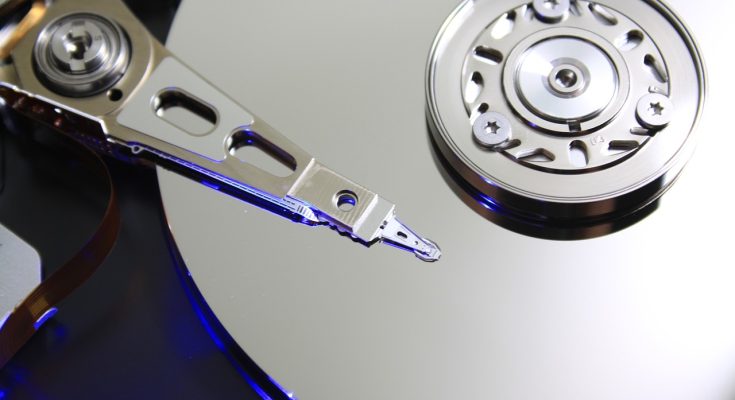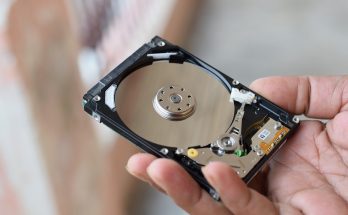In today’s world, data is very important. An operating system (OS) crash can be scary for everyone. A study by StorageCraft found that 31% of IT pros say hardware failure is the main reason for lost data at work.
But, you can get your files back with the right tools and steps. This guide will show you how to recover your files after a crash. We’ll cover why systems fail, types of data loss, and how to get your data back.
Understanding System Crashes and Data Loss Scenarios
System crashes can be really frustrating and scary, often caused by many things. Kernel panics, blue screens of death, software bugs, and driver issues are common reasons for system failures. These failures can lead to losing important data.
Common Causes of System Failures
Research shows the main reasons for system crashes and data loss are:
- Human error during data handling, making up to 75% of incidents
- Hardware failures, with up to 50% of hard drives failing every five years
- Malware and viruses, cited by 29% of respondents as the top data loss cause
- Software corruption, leading to crashes and data corruption during processes
- Natural disasters, power failures, and other environmental factors
Types of Data Loss During OS Crashes
After a system crash, you might lose data in different ways, including:
- File corruption or damage
- Partition or volume loss
- Accidental deletion or formatting
- Irretrievable data due to hardware failure
Initial Steps After Experiencing a Crash
If you have a system crash, first check the situation. Try booting in safe mode. If you can, make a backup. These steps help prevent more data loss and start recovery.
| Cause of Data Loss | Estimated Frequency |
|---|---|
| Human Error | Up to 75% |
| Hardware Failure | 50% of hard drives in 5 years |
| Malware and Viruses | 29% cited as top cause |
| Software Corruption | 1 in 10 respondents |
| Natural Disasters | 40-60% of small businesses never reopen |
Knowing why system crashes happen and what data loss can look like helps. You can then prepare better and protect your important data.
Operating System Failure Recovery Methods
When your operating system crashes, it’s really frustrating. But, there are ways to get your files back and fix your system. You can deal with problems like hardware issues, memory errors, or malware.
Windows Recovery Services is a big help. It can find and fix many system problems. The CHKDSK tool in Windows also scans your hard drive for issues and tries to fix them.
- Windows Recovery Services: Diagnose and repair system issues, including file system errors and boot problems.
- CHKDSK Utility: Scan your hard drive for bad sectors and recover readable information.
- First Aid for Mac: Repair file system errors and restore your Mac to a healthy state.
Creating a system repair disk or using your OS’s recovery tools can also help. Finding out why your system failed is key. This way, you can avoid similar problems in the future.
| Recovery Method | Description | Effectiveness |
|---|---|---|
| Windows Recovery Services | Diagnose and repair system issues, including file system errors and boot problems. | Up to 85% effective in resolving common system failures |
| CHKDSK Utility | Scan your hard drive for bad sectors and recover readable information. | Successful in recovering up to 70% of data in cases of file system corruption |
| First Aid for Mac | Repair file system errors and restore your Mac to a healthy state. | Effective in resolving up to 75% of common macOS issues |
Learning about these recovery methods can help you get your files back. Even with hardware issues, memory problems, or malware, you can fix your computer.
Using Data Recovery Software Solutions
If your system crashes, losing data, special software can help. EaseUS Data Recovery Wizard is a strong tool for this. It helps you get back your important files.
First, you make a special USB or CD/DVD. Then, you use it to start the recovery. This way, you can fix your system even if it won’t start.
Creating Bootable Recovery Media
The first thing to do is make a special USB or CD/DVD. This lets you get into your system and start fixing it. Most software guides you through this step.
Step-by-Step Recovery Process
- Plug in the recovery media and start from it.
- The software will look for your lost data.
- Look at the files you can get back and pick the ones you need.
- Save the files in a safe place outside your system.
Choosing the Right Recovery Software
When picking data recovery software, think about a few things. Look at what file systems it supports and how well it works. Also, see if it’s easy to use.
Some software lets you see files before you get them back. It also might let you pick certain file types to recover. Do your homework to find the best software for you.
Using data recovery software can really help after a system crash. It makes sure your important files are safe and you can get them back.
Professional Data Recovery Services and Advanced Solutions
When you lose important data or damage your hard drive, data recovery services can help. They use advanced recovery techniques and special tools. This way, they can get your files back from badly damaged storage devices.
The process starts with a detailed check and a clear quote. Then, the recovery work is done in a clean room. Even though it costs more than DIY methods, these services can get your data back when others can’t.
- Experienced technicians use cutting-edge tools and techniques to maximize recovery success
- Hard drive repair services cover both internal and external storage devices
- Specialized recovery solutions for SSDs, USB drives, memory cards, and RAID configurations
- Secure data return via encrypted external drives or confidential online access
- No Data, No Recovery Fee guarantee for peace of mind
- Compliance with privacy regulations like HIPAA and FERPA to protect sensitive information
When you think all hope is lost, data recovery services can be your lifeline. They help you get back on track fast and safely. With their success and focus on data safety, they’re the pros you need.
Conclusion
Keeping your data safe and your system running well is key. This helps you stay productive and protect important info. By doing regular backups and keeping your system in check, you can avoid big problems.
If your system crashes, having a good plan can help a lot. It can make it easier to get your files back and fix your system. Being ready and taking steps ahead can lower the chance of losing data and system issues.
Using a mix of system care, backups, and the right tools is very important. It helps keep your digital stuff safe and your computer running smoothly. By being careful and proactive, you can keep your data safe and your system working right.
FAQ
What are the common causes of operating system crashes?
OS crashes can happen for many reasons. These include bugs in software, driver problems, and hardware that doesn’t work well together. Memory errors and malware infections also play a part.
What types of data loss can occur during an OS crash?
Data loss during an OS crash can be serious. It can include file damage, partition issues, and accidental deletions.
What are the initial steps to take after experiencing a system crash?
First, check the situation and try to boot in safe mode. If you can, make a backup of your data.
How can I recover files after an operating system failure?
There are ways to get back your files after a crash. You can use Windows Recovery Services or the CHKDSK utility. For Mac users, First Aid is an option. Data recovery software like EaseUS Data Recovery Wizard also works well.
When should I consider using professional data recovery services?
If you’ve lost a lot of data or your hard drive is badly damaged, get help from pros. They have the tools and skills to fix really tough cases.
How can I prevent data loss from occurring in the future?
To keep your data safe, make regular backups. Use antivirus software and keep your system in good shape. This helps avoid crashes and data loss.



